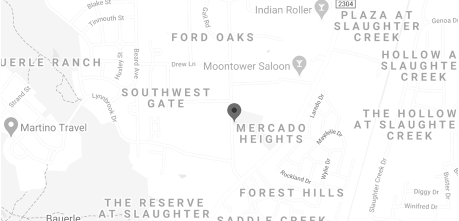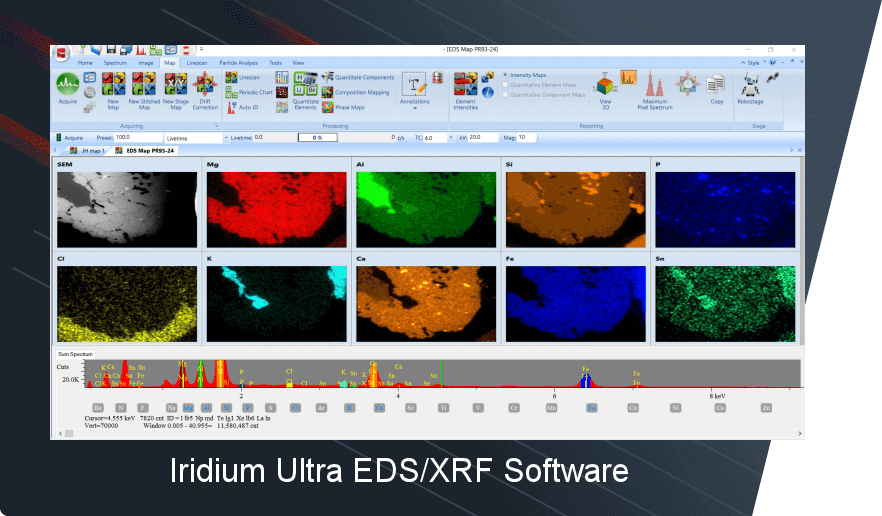Meso X-ray Fluorescence (mesoXRF) Hyperspectral Imaging Process Elemental Analyzer
ProSA: Prometheus
Segregation Analyzer for Steel



Advanced continuously cast high-strength, low-alloy steels are often subject to elemental segregation along the billet or slab centerline during casting and cooling. Monitoring macrosegregation is critical before billet or slab rolling and forming. If elemental segregation is excessive, it can lead to structural weakness, including cracking and breaking of rolled and formed products. Hence, detecting macrosegregation before rolling and forming can generate substantial savings in production costs, material handling as well as product remelting and casting.
Traditional industry monitoring has been done by etching and optical imaging, which is labor intensive while not being compositionally quantitative. Results are subjective and difficult to compare if methods and sample preparation are not identical between plants and different steel manufacturers. Because etching cannot provide quantitative data for meaningful statistical analysis, it has been found to be insufficient for process control.
 Meso-scale X-ray fluorescence (mesoXRF, mesoEDXRF, small spot EDXRF) spectroscopy is an elemental analysis technique that relies on the same principles as X-ray fluorescence (XRF) spectrometry. The difference is that meso-scale x-ray fluorescence spectrometry has a spatial resolution with a diameter smaller than conventional XRF, WDXRF or EDXRF spectrometers. Practically, mesoEDXRF spectrometers with high-precision scanning XYZ-stages — like the ProSA series — function as a type of XRF hyperspectral imaging spectrometer, where each pixel (in a map or image) contains information from 3 – 40 keV in the electromagnetic spectrum.
Meso-scale X-ray fluorescence (mesoXRF, mesoEDXRF, small spot EDXRF) spectroscopy is an elemental analysis technique that relies on the same principles as X-ray fluorescence (XRF) spectrometry. The difference is that meso-scale x-ray fluorescence spectrometry has a spatial resolution with a diameter smaller than conventional XRF, WDXRF or EDXRF spectrometers. Practically, mesoEDXRF spectrometers with high-precision scanning XYZ-stages — like the ProSA series — function as a type of XRF hyperspectral imaging spectrometer, where each pixel (in a map or image) contains information from 3 – 40 keV in the electromagnetic spectrum.
To address centerline segregation in continuously cast steel from a reproducible process control viewpoint , IXRF Systems’ newest offering is a novel, automated mapping, small-spot (meso scale of about 500 to 1000 microns) energy dispersive X-ray fluorescence (EDXRF) process elemental analyzer. With ProSA, it is possible to rapidly scan slab centerline areas and quantitatively monitor elemental inhomogeneity. Sample preparation is simple, requiring only a clean, milled and relatively flat surface. Elemental maps (datacubes) provide clear insight into alloy segregation and are amenable to statistical process control.
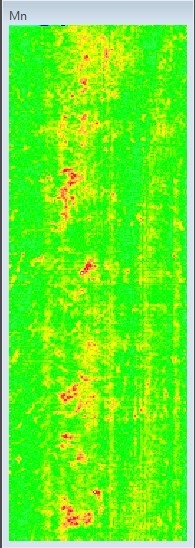
Mn Segregation
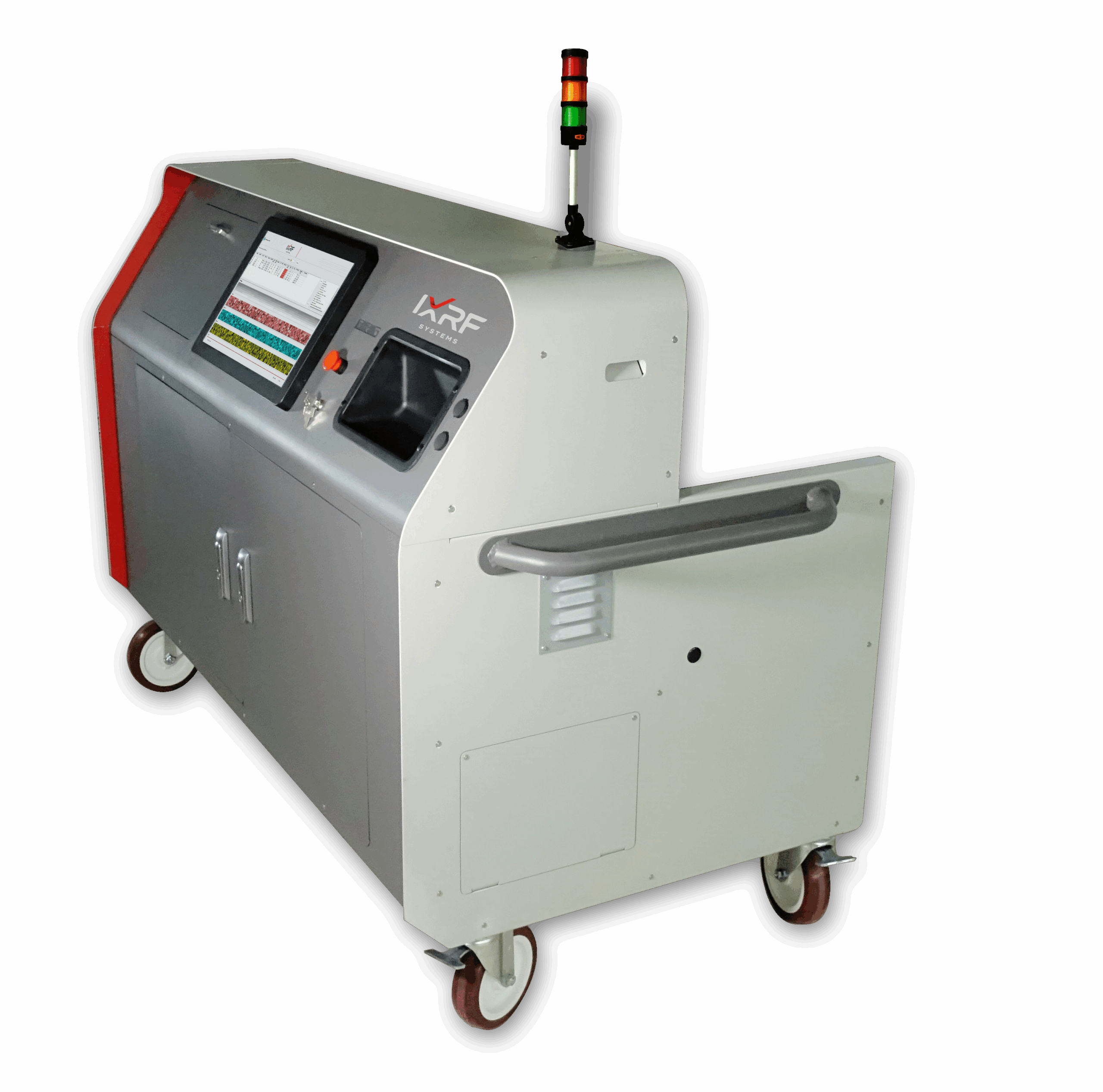
ProSA imaging
process EDXRF
for steel slabs
- Fast-response silicon drift detectors (SDDs)
- Four parallel detection channels
- 200 mm² total active area
- 40 kV, 100 μA X-ray source
- Sub-millimeter collimated beam
- Precision motion stages with high stiffness
- Smooth, accurate sample positioning
- Supports large or heavy samples
- Windows®-based software
- Proprietary ProSA code
- Touch screen interface
Advanced high-strength steel (AHSS), ultrahigh-strength steel (UHSS), and high-strength low-alloy (HSLA) slabs produced across ArcelorMittal’s global casting operations contain elevated levels of alloying elements to meet demanding mechanical property requirements, particularly in the automotive and energy sectors. These include manganese (up to 5%), silicon (up to 2%), and aluminum (up to 2%) in AHSS/UHSS grades such as dual-phase (DP) and transformation-induced plasticity (TRIP) steels. HSLA grades intended for line pipe applications also exhibit high manganese content (up to 1%), as well as relatively elevated sulfur (>50 ppm) and phosphorus (>100 ppm) levels. During the continuous casting of these specialty steels, alloying elements can segregate along the slab centerline due to solute-enriched liquid channels forming near the final solidification point (Figure 1). Inadequate strand containment and bulging-induced liquid flow exacerbate this phenomenon, resulting in persistent centerline segregation. Figure 2 illustrates the typical range of centerline segregation severity observed in AHSS slabs, captured using both traditional etching and advanced microXRF mapping. Casting parameters such as superheat, spray cooling distribution, and casting speed are critical in determining the extent of segregation. Moreover, internal quality is further influenced by mechanical factors, including roll misalignment, roll wear, and issues with spray nozzles, such as plugging or leakage. Excessive bulging near the solidification front may also lead to internal cracks midway. Severe centerline segregation has been linked to the formation of martensitic banding in downstream rolled products. This banded microstructure—especially in dual-phase (DP) steels—can degrade mechanical performance and contribute to localized failure. For this reason, minimizing centerline segregation remains a key quality objective for steelmakers supplying advanced steel grades for high-performance applications.
ProSATM for Windows® 11
At the core of ProSA™ is novel software that provides automated alignment, data acquisition, reduction, and integration of real-time safety systems. Software screen captures show a manganese elemental map of a slab cross-section.

ProSATM Automation Software
EDXRF spectrum utility interface used for detector calibration.

Safety First: Engineered Protection for Industrial Operation
The ProSA™ system has been rigorously engineered with a multi-layered safety architecture to ensure compliance with radiation safety regulations and operator protection during all phases of operation. It incorporates both active and passive safety features, thoroughly validated through a formal Hazard and Operability (HAZOP) analysis, and approved under Ontario’s Regulation 861: X-Ray Safety.
Key Safety Systems Include:
- 360° X-Ray Status Indicator:
A high-visibility warning beacon mounted atop a rigid mast emits a red glow and activates an audible alarm whenever the X-ray tube is energized, ensuring clear visual and auditory notification of active radiation. - Certified Class II Laser System:
All alignment and safety lasers—including the scan head targeting laser (red dot) and three green line lasers (two defining operator keep-out zones and one for cart-to-slab alignment)—are certified as Class II per international laser safety standards. - Laser-Triggered Motion Interruption System:
Class I laser motion sensors, located on either side of the cart, monitor the keep-out zones. If a person or object crosses these boundaries, power to the X-ray tube and all motion stages is immediately interrupted. - Ultrasonic Distance Safeguards:
Two ultrasonic sensors mounted on the scan head continuously monitor the distance between the X-ray aperture and the slab surface. High-voltage excitation of the X-ray tube is only permitted when the slab is correctly positioned at ~30 mm from the collimator tip, ensuring radiation is never emitted during idle or setup conditions. - Directional X-Ray Shielding (ALARA Design):
Internal shielding constructed from lead and brass within the optical kernel ensures that X-rays are emitted solely in a forward-focused, collimated beam. This design adheres to the ALARA (As Low As Reasonably Achievable) principle to minimize exposure to scattered radiation. Even in failure scenarios, measured dose rates remain below regulatory limits (e.g., <0.5 μSv/hr). - Proximity Detection System:
Redundant fiber-optic proximity sensors inside the scan head automatically halt vertical motion if objects are detected <20 mm above or below the scan head during scanning, preventing contact with adjacent slabs or structures.



ProSA™ Technical Specifications
- X-ray Energy: 40 kV (max), 100μA
- Input: 120 VAC, 50/60 Hz, 4.5 A
- Connection Tyoe: NEMA L5-30 twist-lock plug
- Max Power Consumption: 378 VA
- Compressed Air: 35 scfm @ 100 psi
- Air Connection: 1/2″ quick connect, female
- Integrated desiccant air filtration for contaminant removal
- Weight: 1200 lbs (545 kg)
- Dimensions: 82″ W x 62.5″ H x 38.5″ D (2.1 x 1.6 x 1.0 m)
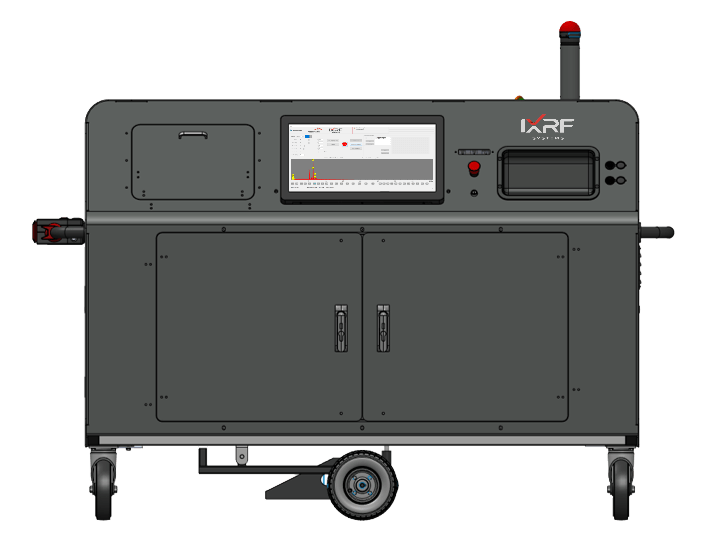
Demonstration of ProSA Steel Analyzer
ArcelorMittal Describes ProSA



